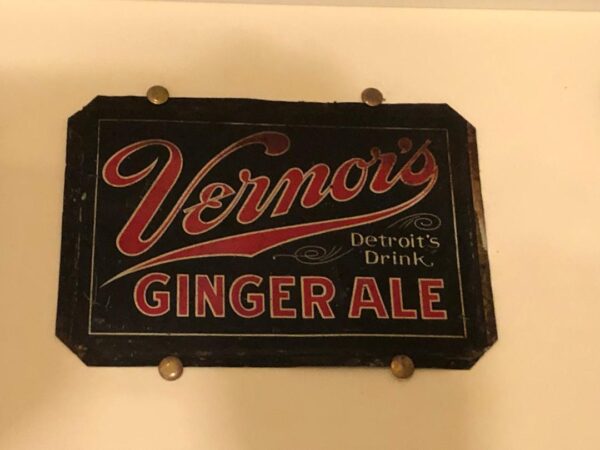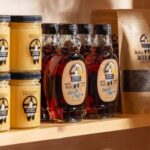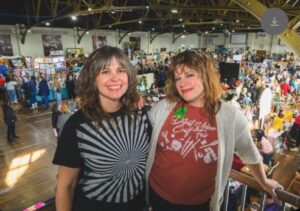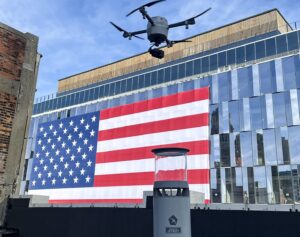Detroit has no dearth of iconic brands that flow well beyond the city borders. We’ve been wanting to sit down with a few of them and see what makes them stand out. We’re kicking off the series with Vernors, everybody’s favorite ginger ale pop. Founder of the Vernors fan club Keith Wunderlich has over 1,000 pieces of Vernors memorabilia in his collection spanning thirty-five years – and he is not stopping there. He’s also not the only one with this interest. Over 70 Vernors brand lovers make up the 18-year-old fan club and they spend their time searching for, acquiring, and trading articles, advertising pieces, and paraphernalia that depict the brand and its history.
Why?
“First, it’s a great product, and second, the history, the stories, the marketing, and the memories go back so far and are so steeped in Detroit’s own history, it’s incredibly interesting and fun to dive into it,” says Wunderlich.
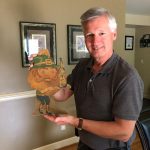
KEITH WUNDERLICH
It’s true that Vernors is the oldest surviving soda pop in the United States, having launched in Detroit in 1866. There are conflicting stories about how the pop was born, but the company’s literature tells it this way.
Detroit native James Vernor – working as a clerk at a drugstore in the city – had developed a ginger ale extract made of tonic, vanilla, spices, and ginger. He then enlisted to fight in the Civil War, so he stored it in an oak cask. Upon his return four years later he tapped the keg, and the drink was delicious. Thus, the birth of Vernors.
Vernor then opened his own pharmacy in 1866 where – among many other things – he sold his pop and had a Vernors soda fountain. The drink became so popular that in 1896, he closed the drugstore and opened a bottling plant on Woodward Avenue south of Jefferson Avenue where Hart Plaza now stands.
Outside the plant stood a Vernors soda fountain featuring ornate plaster, lighting, and ironwork. This was a popular stop for those going to Bob-lo Island and transversing across the city – a place where many memories were made.
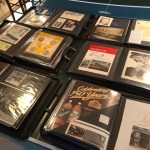
WUNDERLICH’S COLLECTION
“My parents frequented that fountain when they dated in the 40s,” said Wunderlich. “It’s part of the fabric of the life of older Detroiters.”
For the next twenty years, Vernors would continue to prosper and the plant and distribution area expanded. Seemingly every drugstore in Detroit installed dispensing equipment specifically to serve Vernor’s. Hospitals began utilizing it more and thousands of cases were sold to homes.
Along the way, Vernor and his son, James Vernor, Jr. decided to produce the extract for sale to franchise holders, which resulted in a growth in distribution throughout Michigan and into a handful of other cities as well as Ontario, Canada.
Vernor died in 1927 of pneumonia and the story goes, he worked up until the hours before his death. His son, James Vernor, Jr. took over the business. In the late 1950s, the construction of Cobo Hall and other riverfront projects pushed Vernor, Jr. to move the bottling plant and headquarters to 4501 Woodward Avenue.
In 1959, Vernors was sold to investors and the apostrophe was dropped – resulting in the name Vernors. By 1997 it was distributed in 33 states, yet Michigan still accounted for most of the sales. So, throughout it’s history, Vernors was largely referred to as a “pop” versus a soda, since pop is the favored term used by Midwesterners.
The Detroit plant shut down in 1985. Today Vernors is owned by Keurig Dr Pepper.

VERNORS BOTTLE
When asked about his memories of the product, Wunderlich says, “It was always around the house and I grew up on it, and that probably wouldn’t have been the case if it wasn’t a Detroit-based brand. I’ve always been drawn to their unique advertising.”
The Vernors brand has introduced a number of “sticky” slogans throughout the years, including an early 1900s “Detroit’s Drink,” and then in the 80s, “It’s what we drink around here.” The gnome mascot was also used through 1987 and has become a central focus of many of the fan club members’ collections.
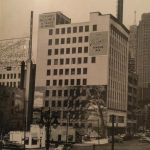
VERNORS PLANT
When asked what inspired the fan club, Wunderlich says, “During pre-internet times, collectors would show up at auctions and bid for products and we started to recognize one another. It just made sense to create a way for us to communicate and get to know each other.”
Wunderlich says there are fan club members from the Detroit area and Canada, and the common theme is their appreciation for the graphics and advertising.
Wunderlich says the most special piece he has in his collection is a James Vernor business card that depicts him as a pharmacist and florist. “There is no mention of Vernors Pop on the card,” he says. “I’ve never seen another one of those.”
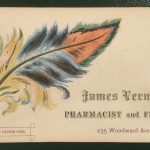
JAMES VERNOR’S BUSINESS CARD
Wunderlich also owns one of six mechanical gnomes made of plaster and wood that were used for self-guided tours at the Woodward plant. “I was lucky to be able to find this,” he says.
One of the original Vernors soda fountain taps can actually be seen on the wall at the Warby Parker store at Woodward and Clifford, which was the location for the original store and the original fountain.
When asked what a world without Vernors would be like, Wunderlich says, “Its history runs so deep in Detroit and America, it would be tough to imagine. It would be a sad life for me if Vernors wasn’t in it.”
As always, be sure to subscribe to our newsletter for regular updates on all things Detroit.


